Virtual Reality Buyers Guide
Virtual Reality (VR) headsets are an alternative to a monitor, creating immersive experiences whether you are playing a flight simulator, training for a complex operation at work or exploring a new product design.
| Standalone VR | PC-powered VR | |
|---|---|---|
| Flexibility | No cabling required | Cables needed |
| Quality of display | Average | High |
| Applications Supported | App Store Only | App Store and PC-based |
| Cost | £ | £££ |
Standalone VR offers great flexibility as the headset is wirelessly connected directly to the Internet and an app store or similar where VR applications can be accessed. No external device is required to create the VR environment (although a smartphone or tablet is needed to initially set-up the headset on first use), so costs are kept to a minimum. There are however some limitations - as all the compute power resides in the headset, there can only be limited processing power, storage capacity and quality of image may suffer if the wireless connection isn’t consistent or fast enough.
When it comes to PC-powered VR the experience is mostly determined by the graphics card (GPU) with higher-spec models delivering smoother frame rates and better visual quality. There will also be likely much greater processor power and storage within a PC, to make more complicated VR environments function well, and access to many more VR-ready PC applications rather than an app store. The down side is that this enhanced experience needs to be tethered (using an HDMI cable) to the PC to provide the higher quality experience. Costs will also be higher. It is worth mentioning that multiple VR headsets can be supported by a particularly powerful PC - either in the same environment or using virtual machine (VM) software to create multiple concurrent user experiences.
Although these approaches are different, the latest VR headsets offer both options - being able to operate without a PC, but having the ability to be connected to one via an additional cable to create the more powerful environment. This approach provides the best of both VR worlds.
VR headsets simulate environments realistically enough to fool the human brain into accepting them as reality. From a scientific standpoint, that all begins by understanding how our brains interpret the things we see to develop a mental picture of the world around us.
For example, when we see the sky, it tells us which direction is up. When we see objects we can identify, we can use their size relative to one another to judge distance. We can also detect light sources by picking up on the shadows cast by the objects around us. VR designers use those conventions to create virtual environments that conform to our expectations of reality. When they do, the result is a seamless experience that we interpret as real. The experience works due to a number of interacting components as explained in the tabs below.
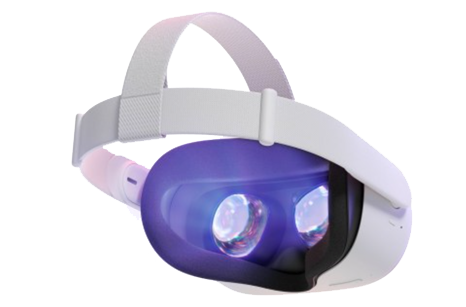
The VR display is created by sending video signals to the headset display. VR headsets tend to use two LCD displays - one for each eye - with lenses placed between your eyes to focus and reshape the picture for each eye and create a stereoscopic 3D image by angling the two 2D images to mimic how each of our two eyes views the world ever-so-slightly differently. These two images and goggle-like wraparound nature of the headset combine to increase immersion by delivering a wide field of view. VR headsets deliver up to a 120 degree field of view, which is wide enough to mimic reality, although for the resulting picture to be at all convincing, a minimum frame rate of around 90 frames per second (fps) is recommended - this keeps the movement fluid and without stutter that could cause motion sickness.
Although there is an ever-growing list of applications that are capable of taking advantage of VR technology, here are a few examples of how it can be integrated into a wide variety of industry sectors.
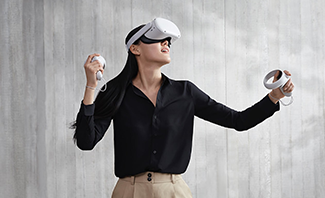
Whether using a static set up in a flight or racing simulator or using a room-scale interactive environment in a first-person shooter game, VR adds a level of realism that cannot be matched by even the best monitors. An increasing list of simulators and games are VR-ready for the best possible experience.
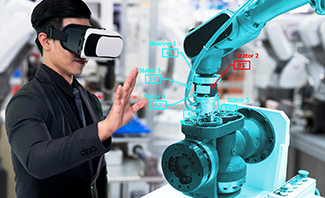
VR is increasingly being used to visualise products to spot potential design flaws or advantages prior to prototypes being made. This allows organisations to tweak designs or make multiple versions and get feedback before expensive materials are used to create real physical versions.
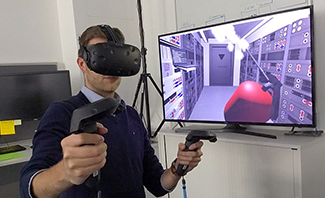
Whether industrial, transportation or military-based, VR is being employed to create environments where evacuations, safety procedures or military engagements can be carried out without the risk of real-world injury or the expense of deploying people and machinery.
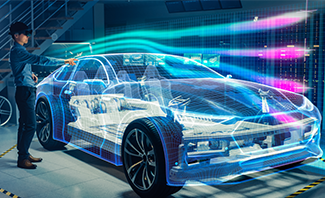
Being able to create an exact virtual replica of a fitted kitchen or a car interior can prove to be a powerful sales tool, as the customer gets to experience exactly what the final product will be like rather than guess. It also makes changing colour schemes and fabric finishes changeable in an instant making comparisons very easy.
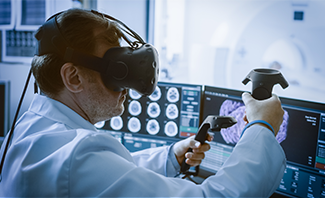
VR can be used to create 3D interactive models of organ systems or entire bodies from computer scans, so students can understand exactly how things fit together, and surgeons can better understand where a problem may lie, helping to plan a procedure prior to the actual operation.
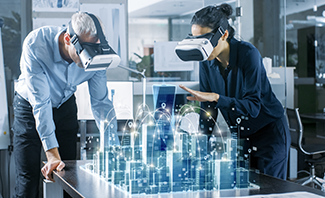
The ability to walk around a virtual building at the planning stage is invaluable in ensuring that all the systems can be made as cost-effective and compatible as possible. Understanding how a space will function prior to building it can deliver the optimal results for any given construction project.
As we’ve seen there are a number of components that make up a VR system - we’ll run through them in the tabs below to make sure you’re aware of all the considerations and don’t forget any vital parts - including a PC to power your entire VR experience, if you’re not choosing a standalone headset.
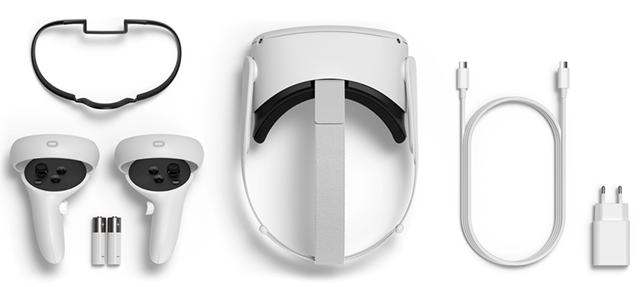
Usually the headset and controllers are supplied in a kit with a number of other accessories such as charging cables, adapters and batteries plus elements like a glasses spacer to move the headset away from the face slightly to accommodate a spectacles wearer. Additional nose pads or face pads will be available to enable some customisation of the headset fit too. It is worth looking at the battery life of a headset as this is likely to be the limiting factor of how long a VR gaming or working session can be. A standalone headset will also likely use more battery too, as all the processing of images and connectivity is occurring in the headset unit. A PC based system will offload much of this power demand to the PC itself. If longer sessions are regularly required then additional back-pack style battery packs can be added to provide more power.
It is worth mentioning at this point that if your VR set-up is to be used in a commercial environment - meaning a business rather than home use, a commercial licence may be needed for the VR headset. Check the usage licensing of any headset you are considering purchasing, but to be certain commercial versions of some headsets are available.
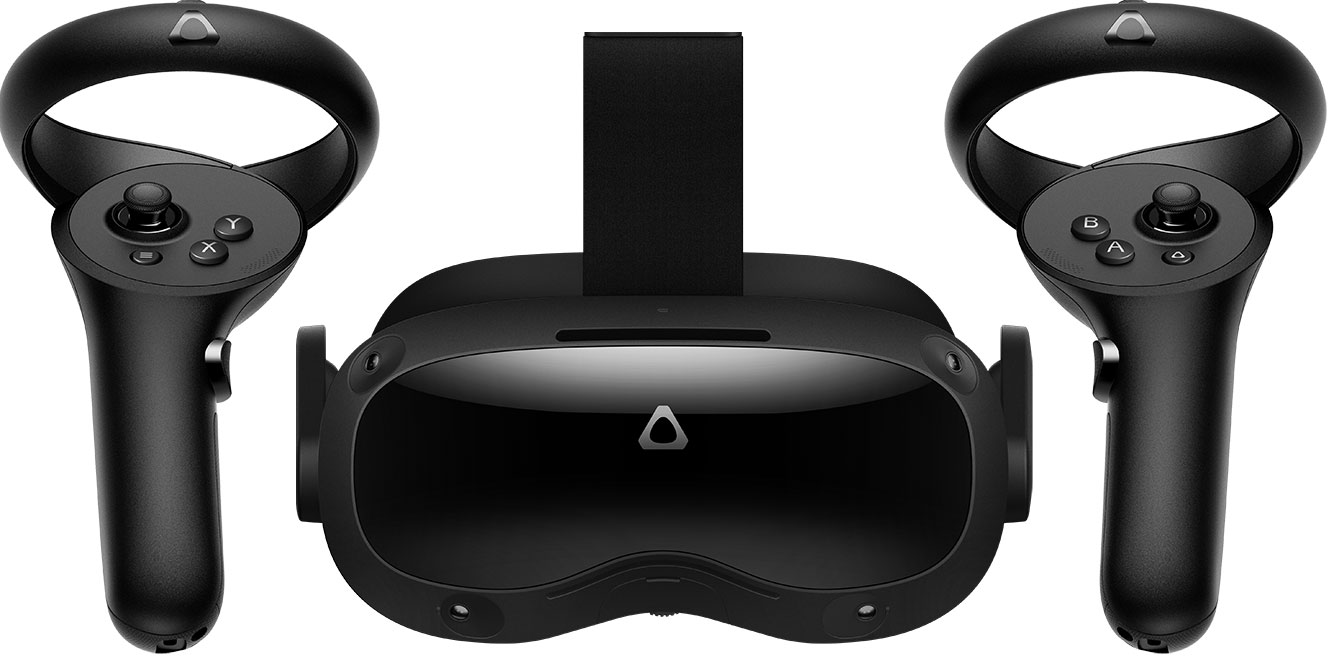
Browse our range of VR solutions
Alternatively, if you have any further questions you’d like answering about VR, don’t hesitate to call one of our friendly advisors on 01204 474747.